AI in Business Marketing

Artificial Intelligence (AI) has emerged as a multitasking wizard in the realm of marketing, but it’s crucial to understand the pros and cons of AI in business marketing to make the most of its capabilities. From crafting compelling ad copies to designing striking visuals, AI promises to elevate your brand’s presence with seemingly minimal effort. However, for every silver lining, there’s a cloud, and AI is no exception.
This blog aims to present an objective view of AI content generation’s benefits and drawbacks, highlighting its applications in marketing, content and graphics creation, and tone and brand voice management.

Pros of AI in Marketing and Advertising
Efficiency and Speed: AI accelerates content creation, saving tons of time. Need 10 posts for your social media campaign overnight? AI has got you covered.
AI accelerates content creation, allowing marketers to meet tight deadlines effortlessly. AI tools can generate diverse, engaging content in a matter of minutes. This capability frees up valuable time for strategizing and other high-level tasks.
Scalability: AI can scale effortlessly if you need content for a single blog or an entire digital marketing strategy. Imagine running a global marketing campaign with localized content in multiple languages; AI-powered tools like DeepL or Google Translator can handle translations in seconds, ensuring your message reaches a broader audience without manual effort.
Cost-Effectiveness: Hiring a team of designers, content writers, and editors can be costly. AI tools typically come as a one-time or subscription-based service, which is comparatively cheaper. For example, using a tool like ChatGPT for automated content can significantly reduce expenses while still producing budget-friendly results.
Personalization: AI can analyze massive amounts of data to create personalized content for different segments of your audience, boosting engagement rates. For instance, AI-driven platforms can help you tailor email marketing campaigns based on user behavior, ensuring that each recipient gets content tailored to their interests, and increasing open and conversion rates.
Consistent Quality: AI can maintain a consistent tone and quality across different pieces of content, ensuring uniformity in brand messaging. Tools like Grammarly can automatically proofread and edit your content, maintaining a consistent style and tone that aligns with your brand guidelines, whether you’re producing social media posts, blogs, or newsletters.
Cons of AI in Marketing and Advertising
Lack of Originality: While fast, AI-generated content may tend to feel generic and uninspired due to its reliance on pre-existing data. For example, an AI tool might generate multiple blog posts on a common topic like “productivity tips,” but they may all sound very similar and lack the unique insights that a human writer might provide. This can affect how engaging the content is and may ultimately impact reader retention and brand perception.
Risk of Inaccuracy: AI can “hallucinate” or fabricate information, leading to errors that could undermine your brand’s credibility. For instance, an AI might generate a social media post with incorrect statistical data or misinterpret the context of a news story, spreading misinformation. Such inaccuracies can damage your brand’s reputation and erode trust among your audience.
Limited Creativity: AI struggles with abstract thought and can’t replace the creative touch that comes from human intuition and experience. While an AI might generate a catchy slogan, it might lack the nuanced, creative flair that a human copywriter could bring. For example, AI may produce a series of straightforward product descriptions but fail to capture the unique storytelling elements that make the descriptions compelling and memorable.
Ethical Concerns: Over-reliance on AI might lead to job redundancies. For instance, using AI tools for content creation and customer service may reduce the need for human writers and support staff, leading to job losses. Additionally, there are issues related to bias and data privacy. AI algorithms can inadvertently perpetuate existing biases in the data they are trained on, leading to discriminatory outcomes in ad targeting or content recommendations.
Furthermore, the extensive use of user data by AI tools raises concerns over data privacy and security.
High Initial Learning Curve: Understanding and effectively using AI tools requires a considerable learning curve. Due to their complexity, novice users might find it challenging to get the most out of AI platforms. For example, implementing and optimizing an AI-driven CRM system requires a detailed understanding of its features and functionalities, which might necessitate extensive training and resources.
Despite AI offering numerous benefits, brand voices must be mindful of its potential pitfalls and address them proactively to maximize its advantages while mitigating any drawbacks.
AI in Content and Graphics Creation
Content Generation:
Pros:
- Quickly generate blogs, articles, and social media posts.
- Analogous to having a virtual assistant who never sleeps.
- Tailored content through algorithms analyzing customer behavior.
Cons:
- The creativity of human storytelling can sometimes get lost.
- Potential for creating content that feels robotic and less engaging.
- AI still needs oversight to ensure factual accuracy and relevance.
Graphics Creation:
Pros:
- Design attractive visuals and infographics without needing advanced design skills.
- Templates and AI-driven suggestions enhance brand consistency.
Cons:
- Limited by preset templates and cannot achieve highly customized designs.
- Sometimes the output can look generic.
Tone and Brand Voice Management
Pros:
- AI helps maintain a consistent brand voice across various platforms, offering brand uniformity.
- It can help adjust the tone based on audience segments, making the communication more effective.
Cons:
- AI might not grasp the subtle nuances and emotional undercurrents important for human interaction.
- Misinterpretation by AI can lead to offensive or inappropriate content.
Navigating AI “Hallucinations”
Understand AI’s Limits: AI can be an incredibly powerful tool for content and graphics creation, but it’s crucial to remember that it is, at its core, a sophisticated pattern recognizer and not a genuine creator.
Always double-check the content it generates to ensure it meets your standards for accuracy, relevancy, and creativity. Acknowledge its limitations to prevent over-reliance and maintain the integrity of your brand’s voice.
Clear Commands and Inputs: To minimize the chances of errors, provide precise and clear commands when using AI tools. Ambiguity in instructions can lead to content that deviates from your intended message.
Think of it as programming: the more detailed your input, the better the output. Clearly outline your expectations and provide specific guidelines to ensure the AI understands your requirements.
Assist AI with Context: Feed your AI tools with relevant information and context to guide their output more effectively. Giving context helps the AI generate content that aligns better with your brand’s tone and objectives.
For example, if you’re creating a blog post about a specific industry trend, supply the AI with updated articles, key statistics, and background information to enhance its understanding and improve the quality of its output.
Regular Audits: Perform regular audits of AI-generated content to maintain accuracy and integrity. Just as you would proofread human-generated content, review AI outputs to catch any factual inaccuracies, contextual errors, or tonal mismatches.
Consistent auditing helps ensure that the content adheres to your brand standards and avoids the dissemination of misleading or incorrect information.
AI in business marketing can be a game-changer, providing unparalleled efficiency and personalization. However, it’s crucial to leverage its capabilities wisely, aware of its limitations and potential pitfalls.
By combining the quick-fire competence of AI with human creativity and oversight, businesses can truly harness the power of AI without falling prey to its drawbacks. So, the next time you use AI for your content, remember: it’s a powerful tool but still needs a human touch to shine its brightest.
At Empire Creative, our team is rigorously trained in the nuances and intricacies of AI technology, enabling us to navigate its landscape efficiently and effectively for business applications. By leveraging our extensive knowledge and expertise, we can help your business achieve its marketing goals while minimizing the risks associated with AI content generation. Whether you need targeted ad campaigns, engaging content, or streamlined brand voice management, we’re equipped to assist you every step of the way.
Take the next step towards elevating your marketing strategy. Contact us today for a free consultation and evaluation of your current marketing efforts. Let Empire Creative help you unlock the full potential of AI in business to drive your brand forward.
AI in Business Marketing

Artificial Intelligence (AI) has emerged as a multitasking wizard in the realm of marketing, but it’s crucial to understand the pros and cons of AI in business marketing to make the most of its capabilities. From crafting compelling ad copies to designing striking visuals, AI promises to elevate your brand’s presence with seemingly minimal effort. However, for every silver lining, there’s a cloud, and AI is no exception.
This blog aims to present an objective view of AI content generation’s benefits and drawbacks, highlighting its applications in marketing, content and graphics creation, and tone and brand voice management.

Pros of AI in Marketing and Advertising
Efficiency and Speed: AI accelerates content creation, saving tons of time. Need 10 posts for your social media campaign overnight? AI has got you covered.
AI accelerates content creation, allowing marketers to meet tight deadlines effortlessly. AI tools can generate diverse, engaging content in a matter of minutes. This capability frees up valuable time for strategizing and other high-level tasks.
Scalability: AI can scale effortlessly if you need content for a single blog or an entire digital marketing strategy. Imagine running a global marketing campaign with localized content in multiple languages; AI-powered tools like DeepL or Google Translator can handle translations in seconds, ensuring your message reaches a broader audience without manual effort.
Cost-Effectiveness: Hiring a team of designers, content writers, and editors can be costly. AI tools typically come as a one-time or subscription-based service, which is comparatively cheaper. For example, using a tool like ChatGPT for automated content can significantly reduce expenses while still producing budget-friendly results.
Personalization: AI can analyze massive amounts of data to create personalized content for different segments of your audience, boosting engagement rates. For instance, AI-driven platforms can help you tailor email marketing campaigns based on user behavior, ensuring that each recipient gets content tailored to their interests, and increasing open and conversion rates.
Consistent Quality: AI can maintain a consistent tone and quality across different pieces of content, ensuring uniformity in brand messaging. Tools like Grammarly can automatically proofread and edit your content, maintaining a consistent style and tone that aligns with your brand guidelines, whether you’re producing social media posts, blogs, or newsletters.
Cons of AI in Marketing and Advertising
Lack of Originality: While fast, AI-generated content may tend to feel generic and uninspired due to its reliance on pre-existing data. For example, an AI tool might generate multiple blog posts on a common topic like “productivity tips,” but they may all sound very similar and lack the unique insights that a human writer might provide. This can affect how engaging the content is and may ultimately impact reader retention and brand perception.
Risk of Inaccuracy: AI can “hallucinate” or fabricate information, leading to errors that could undermine your brand’s credibility. For instance, an AI might generate a social media post with incorrect statistical data or misinterpret the context of a news story, spreading misinformation. Such inaccuracies can damage your brand’s reputation and erode trust among your audience.
Limited Creativity: AI struggles with abstract thought and can’t replace the creative touch that comes from human intuition and experience. While an AI might generate a catchy slogan, it might lack the nuanced, creative flair that a human copywriter could bring. For example, AI may produce a series of straightforward product descriptions but fail to capture the unique storytelling elements that make the descriptions compelling and memorable.
Ethical Concerns: Over-reliance on AI might lead to job redundancies. For instance, using AI tools for content creation and customer service may reduce the need for human writers and support staff, leading to job losses. Additionally, there are issues related to bias and data privacy. AI algorithms can inadvertently perpetuate existing biases in the data they are trained on, leading to discriminatory outcomes in ad targeting or content recommendations.
Furthermore, the extensive use of user data by AI tools raises concerns over data privacy and security.
High Initial Learning Curve: Understanding and effectively using AI tools requires a considerable learning curve. Due to their complexity, novice users might find it challenging to get the most out of AI platforms. For example, implementing and optimizing an AI-driven CRM system requires a detailed understanding of its features and functionalities, which might necessitate extensive training and resources.
Despite AI offering numerous benefits, brand voices must be mindful of its potential pitfalls and address them proactively to maximize its advantages while mitigating any drawbacks.
AI in Content and Graphics Creation
Content Generation:
Pros:
- Quickly generate blogs, articles, and social media posts.
- Analogous to having a virtual assistant who never sleeps.
- Tailored content through algorithms analyzing customer behavior.
Cons:
- The creativity of human storytelling can sometimes get lost.
- Potential for creating content that feels robotic and less engaging.
- AI still needs oversight to ensure factual accuracy and relevance.
Graphics Creation:
Pros:
- Design attractive visuals and infographics without needing advanced design skills.
- Templates and AI-driven suggestions enhance brand consistency.
Cons:
- Limited by preset templates and cannot achieve highly customized designs.
- Sometimes the output can look generic.
Tone and Brand Voice Management
Pros:
- AI helps maintain a consistent brand voice across various platforms, offering brand uniformity.
- It can help adjust the tone based on audience segments, making the communication more effective.
Cons:
- AI might not grasp the subtle nuances and emotional undercurrents important for human interaction.
- Misinterpretation by AI can lead to offensive or inappropriate content.
Navigating AI “Hallucinations”
Understand AI’s Limits: AI can be an incredibly powerful tool for content and graphics creation, but it’s crucial to remember that it is, at its core, a sophisticated pattern recognizer and not a genuine creator.
Always double-check the content it generates to ensure it meets your standards for accuracy, relevancy, and creativity. Acknowledge its limitations to prevent over-reliance and maintain the integrity of your brand’s voice.
Clear Commands and Inputs: To minimize the chances of errors, provide precise and clear commands when using AI tools. Ambiguity in instructions can lead to content that deviates from your intended message.
Think of it as programming: the more detailed your input, the better the output. Clearly outline your expectations and provide specific guidelines to ensure the AI understands your requirements.
Assist AI with Context: Feed your AI tools with relevant information and context to guide their output more effectively. Giving context helps the AI generate content that aligns better with your brand’s tone and objectives.
For example, if you’re creating a blog post about a specific industry trend, supply the AI with updated articles, key statistics, and background information to enhance its understanding and improve the quality of its output.
Regular Audits: Perform regular audits of AI-generated content to maintain accuracy and integrity. Just as you would proofread human-generated content, review AI outputs to catch any factual inaccuracies, contextual errors, or tonal mismatches.
Consistent auditing helps ensure that the content adheres to your brand standards and avoids the dissemination of misleading or incorrect information.
AI in business marketing can be a game-changer, providing unparalleled efficiency and personalization. However, it’s crucial to leverage its capabilities wisely, aware of its limitations and potential pitfalls.
By combining the quick-fire competence of AI with human creativity and oversight, businesses can truly harness the power of AI without falling prey to its drawbacks. So, the next time you use AI for your content, remember: it’s a powerful tool but still needs a human touch to shine its brightest.
At Empire Creative, our team is rigorously trained in the nuances and intricacies of AI technology, enabling us to navigate its landscape efficiently and effectively for business applications. By leveraging our extensive knowledge and expertise, we can help your business achieve its marketing goals while minimizing the risks associated with AI content generation. Whether you need targeted ad campaigns, engaging content, or streamlined brand voice management, we’re equipped to assist you every step of the way.
Take the next step towards elevating your marketing strategy. Contact us today for a free consultation and evaluation of your current marketing efforts. Let Empire Creative help you unlock the full potential of AI in business to drive your brand forward.




